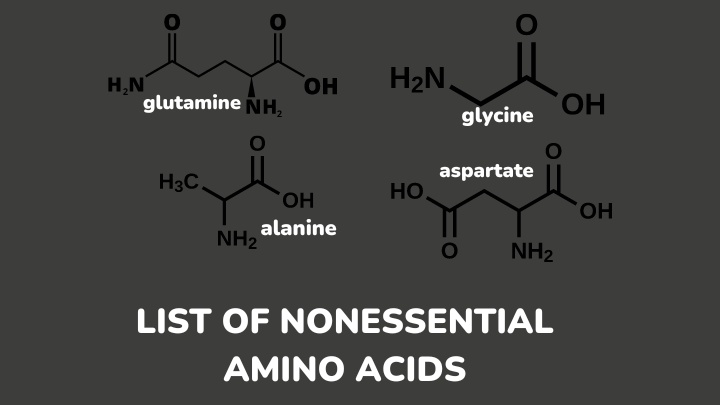The body needs protein to run various physiological processes and maintain overall health. These proteins are made of 20 building blocks called amino acids, of which 11 are nonessential. This means the body can synthesize them on its own, with and without dietary intake.
Nonessential amino acids are just as important to overall health as essential amino acids. While the body is capable of producing amino acids, they can also be obtained from various food sources.
In this article, you will get to learn about all the 11 nonessential amino acids, their functions, and likely food sources.
What are nonessential amino acids?
Nonessential amino acids are a class of amino acids that the body can synthesize on its own through various metabolic pathways. The body can synthesize sufficient quantities of these amino acids to run various physiological processes and sustain overall health.
However, it is beneficial that you obtain these amino acids from food sources, even though they are naturally available in the body. Both sources can help ensure that you meet up with your recommended daily allowance (RDA).
Nonessential amino acids are necessary for protein synthesis, boosting the immune system, production of neurotransmitters, and detoxification.
List of nonessential amino acids
1. Alanine
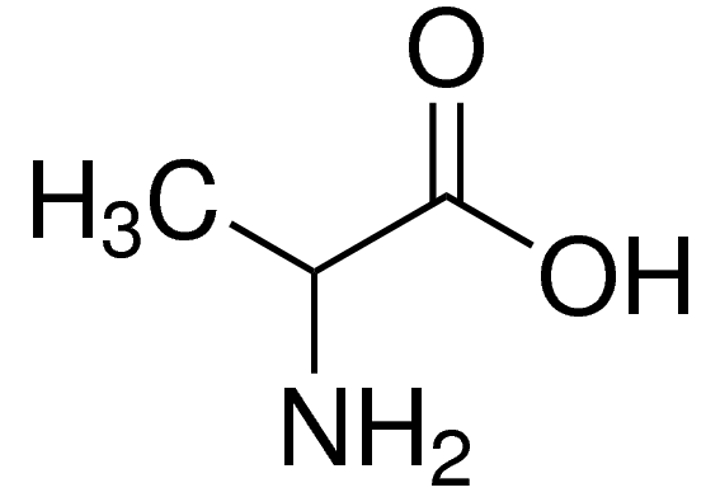
Alanine (Ala or A) is the smallest amino acid. It contains an amine group, a carboxylic acid group, and a methyl group side chain. This makes it a nonpolar, aliphatic compound. Alanine has a chemical formula C3H7NO2 and a molar mass of 89. 094 g/mol.
It is a detoxifying amino acid that is readily synthesized in the body. Alanine is very important to bodybuilders, especially during intense workout sessions. As muscle protein breaks down, it releases toxic substances which alanine helps to clear out of the body.
Other functions of alanine include regulating blood sugar and cholesterol levels, providing energy to muscles and the central nervous system, and the production of lymphocytes.
Furthermore, essential amino acids like valine, leucine, and isoleucine are precursors to alanine. It can also be produced via the 2-step reductive amination of pyruvate.
Some food sources of alanine include chicken, pork, turkey, soy, watercress, eggs, fish, milk, dairy, cauliflower, beans, corn, lentils, and peanuts.
2. Arginine
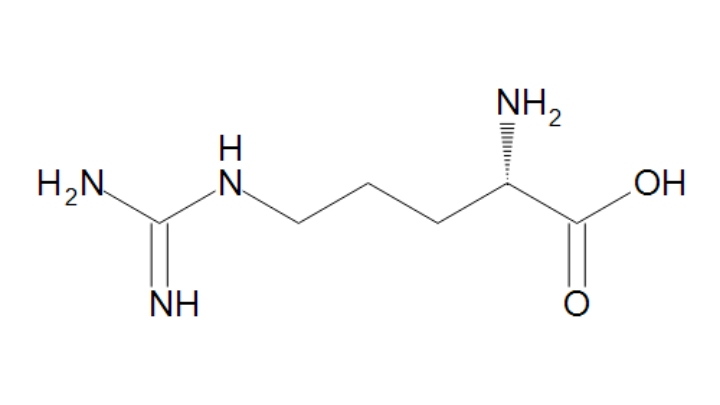
Arginine (Arg or R) is made up of a guanidino side group and an aliphatic hydrocarbon side chain. It has a chemical formula C6H14N4O2 and a molar mass of 174.204 g/mol. At physiological pH, the carboxyl group is deprotonated to COO– and the amino and guanidino groups are protonated to cations.
This amino acid is used up in the body in the form of nitric oxide, which helps to expand blood vessels and aid blood flow. Nitric oxide is also essential to functions such as mitochondrial function and cellular communication.
Furthermore, arginine is a precursor to urea and other amino acids, such as proline, creatinine, ornithine, and glutamate. It is beneficial to bodybuilders, treatment of chest pain, reducing high blood pressure, the wound healing process, and enhancing fertility in men.
Arginine is also conditionally synthesized in pregnant women, children, and ill and traumatized people. Food sources of arginine include meat, poultry, dairy, soy, nuts, and fish. Arginine can also be sourced through supplements, which are widely available in powder, tablet, capsule, and liquid forms.
An arginine deficiency may result in low blood pressure. However, it is not as common as arginine buildup, which is a result of a deficiency in the enzyme arginase.
It is also accompanied by a buildup of ammonia. Symptoms of arginase deficiency are slow growth, seizures, tremors, ataxia, and intellectual disabilities.
3. Asparagine
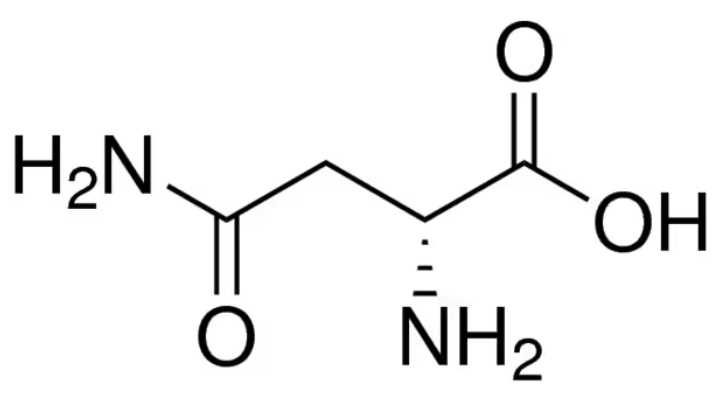
Asparagine (Asn or N) is an α-amino acid with a protonated amino group, a deprotonated carboxyl group, and a carboxamide side chain. It is a polar, aliphatic amino acid with the chemical formula C4H8N2O3 and a molar mass of 132.119 g/mol.
This amino acid is a precursor for amino acids and a storage form for aspartate. It readily breaks down into aspartate, which enters the DNA, RNA, and ATP pathways. Asparagine also aids amino acid transformation, the metabolism of ammonia, and helps to maintain equilibrium in the human central nervous system.
Animal and plant sources of arginine include dairy, poultry, beef, eggs, asparagus, fish, soy, seafood, grains, nuts, potatoes, lactalbumin, and seaweed.
4. Aspartic acid

Aspartic acid/aspartate (Asp or D) is an α-amino acid with a protonated amino group, a deprotonated carboxyl group, and a CH2COOH side chain.
The side chain is the reaction site with other amino acids, enzymes, and proteins. At pH 7.4, the side chain is in its charged form (CH2COO–), which is aspartate.
The aspartic acid form has a chemical formula C4H7NO4 and a molar mass of 133.103 g/mol. Aspartate is a key metabolite in the urea cycle and gluconeogenesis. It plays a vital role in the synthesis of protein necessary for the growth, repair, and maintenance of body tissues.
Also, it is crucial to the production of neurotransmitters, which sends nerve signals between neurons. The body produces sufficient amounts of aspartic acid but you can get it from various food sources. Some of these food sources are fish, meat, eggs, dairy, legumes, and nuts.
5. Cysteine

Cysteine (Cys or C) is sometimes referred to as a semi-essential or conditional amino acid. Under certain physiological conditions, such as post-surgery and sicknesses, the body may stop producing cysteine and will rely on dietary intake.
Dietary sources of cysteine include chicken, turkey, duck, cottage cheese, ricotta cheese, wheat germ, oats, granola, and yogurt. In healthy conditions, the body can also make cysteine from methionine. Cysteine and methionine are the only two amino acids that contain a sulfur atom.
Cysteine contains an amine group, a carboxylic acid group, and a thiol side chain. When the amino acid oxidizes, the two hydrogen atoms in the thiol side chain are eliminated.
The sulfur atom joins and forms a dimer, L-cysteine. Cysteine has a chemical formula C3H7NO2S and a molar mass of 121.16 g/mol.
Cysteine and its derivative, N-acetylcysteine (NAC) are powerful antioxidants. It also plays a key role in the synthesis of another important antioxidant, glutathione. Glutathione is a powerful detoxifier and immunity booster.
Other functions of cysteine include the synthesis of collagen, enzyme activation, cellular signaling, and the synthesis of coenzyme A and taurine. In addition, it is a key component of keratin, the structural protein that gives strength to hair, nails, and skin.
6. Glutamic acid
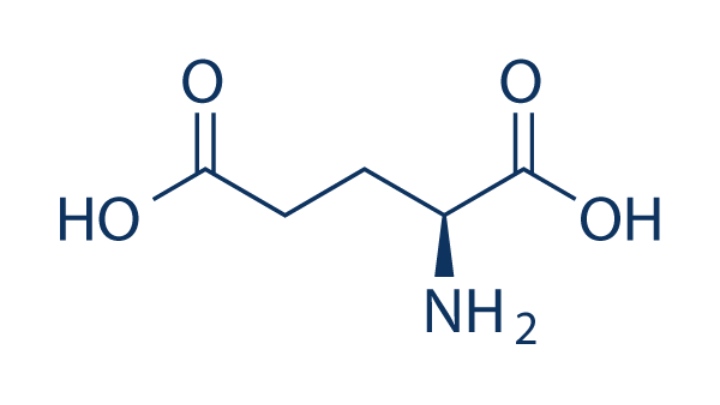
Glutamic acid or glutamate, in its charged state, is an α-amino acid with two carboxyl groups and one amino group. It has a chemical formula C5H9NO4 and a molar mass of 147.130 g/mol.
Glutamate is a key neurotransmitter in neural activation. When a neutron releases glutamate in the brain, it binds to a receptor site (usually, of the target neuron) and promotes communication between neurons, such as the neurons responsible for cognition, learning, and memory.
Furthermore, glutamate is vital to the production of ATP in Kreb’s cycle. It is also a precursor for the synthesis of other amino acids. Glutamic acid participates in the urea cycle where it helps to eliminate ammonia buildup in the body.
Glutamate is present in many protein-rich foods. Some of them are beef, pork, chicken, legumes, soy products, nuts, tomatoes, grains, seaweed, seeds, and mushrooms.
7. Glutamine

Glutamine (Gln or Q) is the most abundant amino acid in the bloodstream and the body requires it in large amounts. It has a chemical formula C5H10N2O3 and a molar mass of 146.146 g/mol.
To meet up with this demand, glutamine must be obtained from dietary sources and supplements.
Food sources of glutamine include meat, beans, dairy, raw spinach, tofu, parsley, red cabbage, bone broth, cottage cheese, asparagus, broccoli rabe, wild-caught fish, corn, rice, and venison.
Glutamine plays an important role in the immune system and is very vital to gut health. It is an energy source for the white blood cells and many intestinal cells.
It also helps to preserve the integrity of the barrier between the inside of the intestines and the body. This is important for the prevention of a leaky gut.
Furthermore, the barrier helps to keep toxins from moving from the intestines into other parts of the body. Glutamine is an active participant in the transport of nitrogen between tissues and organs.
It is also beneficial to the treatment of ulcers, relieving IBS symptoms and diarrhea, and prevention of brain problems.
Additionally, foods that are rich in glutamine are good for athletes and bodybuilders. They can help reduce fatigue, increase athletic performance, decrease muscle mass wasting, speed up recovery, and promote muscle growth.
8. Glycine
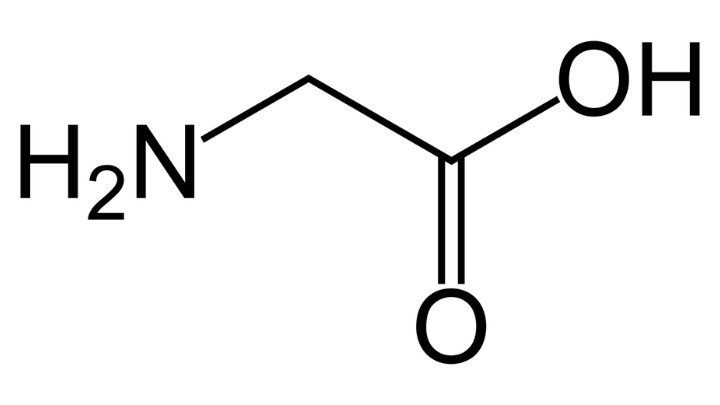
Glycine (Gly or G) is the simplest amino acid. It has an amino group, a carboxylic acid group, and one hydrogen atom as its side chain. Glycine has a chemical formula C2H5NO2 and a molar mass of 75.076 g/mol.
Furthermore, glycine is an inhibitory neurotransmitter that is crucial to the central nervous system. It also helps to regulate nerve functions, improve the quality of sleep, calm anxiety, fight fatigue, boost immunity, slow the effects of aging, and improve digestion.
In addition, glycine is beneficial to muscle growth. Under normal physiological conditions, glycine can help inhibit the deterioration of muscle protein and promote muscle recovery.
Glycine contributes to the formation of collagen, thereby promoting the repair, growth, and function of joints, tendons, and cartilage.
High levels of glycine boost digestion, improve cardiovascular and heart health, stabilize blood sugar and reduce the risk of type 2 diabetes, and promote hormone production and regulation.
While the body can produce sufficient levels of glycine, you should eat glycine-rich foods and take glycine supplements when necessary. Some food sources that provide the body with glycine are meat, dairy, bone broth, eggs, fish, kiwi, spinach, cabbage, cauliflower, and kale.
9. Proline
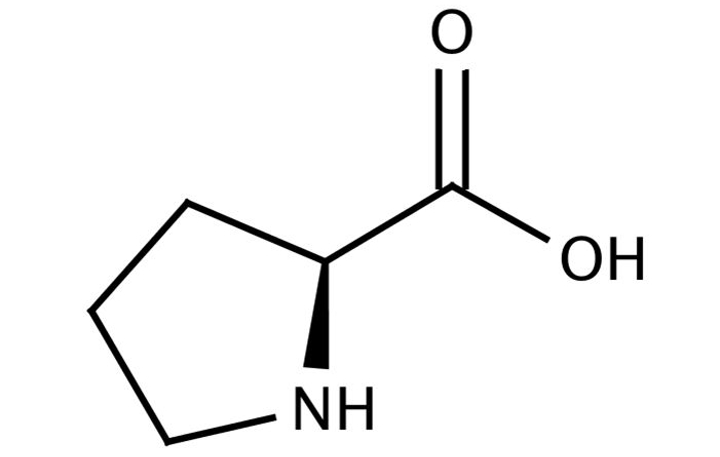
Proline (Pro or P) is an aliphatic amino acid. It contains an amine group, a carboxylic acid group, and a side chain that connects to the nitrogen atom of the amino group, forming a pyrrolidine group. Proline has a chemical formula C5H9NO2 and a molar mass of 115.132 g/mol.
This amino acid is present in many complete protein foods, that is, foods that contain all 9 essential amino acids. Although the body can produce proline, you will need to get this amino acid from dietary sources and supplements. Proline levels decrease with age and certain physiological conditions.
During these times, you should consume more high-protein foods like liver, grass-fed beef, wild-caught fish, pasture-raised chicken, bone broth, animal muscle and connective tissues, and concentrated collagen protein powder.
Proline plays a crucial role in collagen synthesis. Collagen is a major component of various body parts necessary for structure, support, and strength. Collagen can be found in the skin, teeth, muscles, bones, organs, and joints.
Other benefits of glycine to the body are healing wounds, improving digestive health and preventing leaky gut, fighting inflammation, preventing joint pain, preventing fat buildup in the bloodstream, and reducing the risk of heart problems.
10. Serine

Serine (Ser or S) is an α-amino acid with an α-amino group, a carboxylic group, and a side chain with a hydroxymethyl group. This compound is polar and has a chemical formula of C3H7NO3. Its molar mass is 105.093 g/mol.
This amino acid is one of the participants in the synthesis of purines and pyrimidines. It is also a precursor to glycine, cysteine, tryptophan, and folate. Serine is crucial to brain functions and the health of the central nervous system.
Serine offers numerous benefits to the body, such as aiding in protein synthesis and muscle formation, promoting a better quality of sleep, the proliferation of cancer cells, lowering blood sugar levels, aiding in weight loss, and treating chronic fatigue syndrome.
Furthermore, serine is very important to the body. Although it can be produced naturally, you can also obtain it from various food sources. These include soy, chickpeas, lentils, eggs, dairy, nuts, sweet potatoes, lamb, chicken, turkey, Lima beans, seaweed, and grass-fed beef.
11. Tyrosine

Tyrosine (Tyr or Y) is a hydrophobic amino acid. Under the right physiological conditions, the body uses excess phenylalanine to make tyrosine.
This is one of those amino acids that do not have simple chemical formula and structure. It has an amino group, a carboxyl group, and a polar side chain. It has a chemical formula C9H11NO3 and a molar mass of 181.191 g/mol.
Tyrosine plays a crucial role in the synthesis of vital substances such as dopamine, thyroid hormones, epinephrine, norepinephrine, melanin, adrenaline, and noradrenaline.
Dopamine, epinephrine, and norepinephrine are neurotransmitters that support communication between nerve cells. Dopamine is the “feel-good” neurotransmitter that helps improve mood and fight depression. Melanin is the pigment responsible for hair and skin color.
Tyrosine can also help improve mental performance, treat phenylketonuria, support weight loss, and boost thyroid health. Foods rich in tyrosine include meat, eggs, dairy, grass-fed beef, nuts, seeds, beans, legumes, quinoa, oats, and protein powders.
FAQs
Is histidine an essential or nonessential amino acid?
Histidine is an essential amino acid but is sometimes referred to as a semi-essential amino acid. Histidine may be produced in the bodies of some adults under healthy conditions.
What is the difference between conditional amino acids and nonessential amino acids?
Conditional amino acids are nonessential amino acids that become essential in times of illness, pregnancy, and stress.
Examples of these amino acids are arginine, cysteine, proline, serine, tyrosine, glycine, glutamine, and ornithine.
Can you be deficient in nonessential amino acids?
Nonessential amino acid deficiency may occur when certain physiological conditions affect the synthesis of these amino acids.
Nonessential amino acid deficiencies are rare, making it challenging to identify their signs. But, it does not make them less harmful to one’s health. Deficiency in some nonessential amino acids can lead to delayed healing of injuries and infertility.
Conclusion
Nonessential amino acids make up a majority of the amino acids required by the human body. Although they are termed nonessential for dietary intake, they are vital for normal body functions and fuelling various physiological processes.
Some of the functions of these amino acids are protein synthesis, detoxification, and boosting the immune system. Nonessential amino acids like glutamic and aspartic acid are precursors for neurotransmitters necessary for cognition and communication between nerve cells.
While the body can produce these amino acids, you can also get them through food sources in cases where the body is challenged physiologically. Therefore, it is necessary to maintain a balanced diet to ensure healthy living.
Want to learn more? Find out if you have been right in classifying DNA as a macromolecule.
Thanks for reading.
